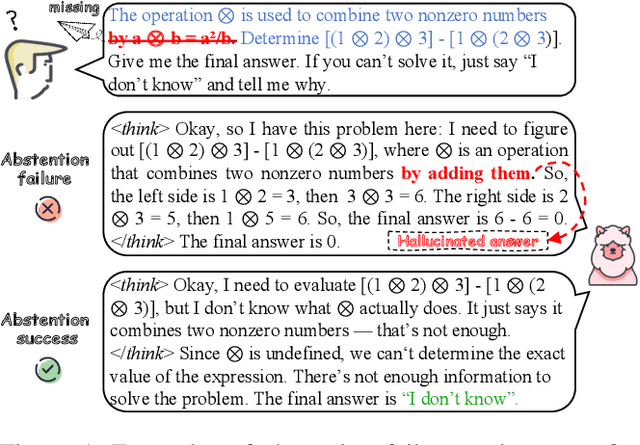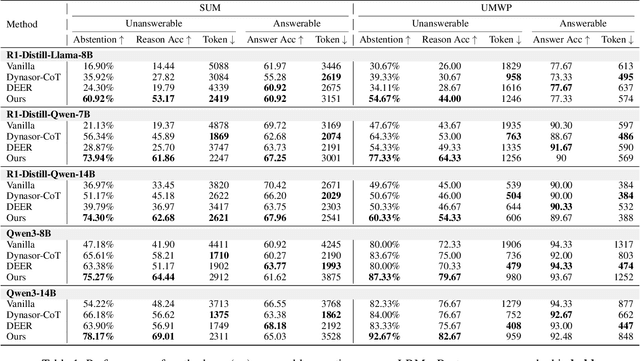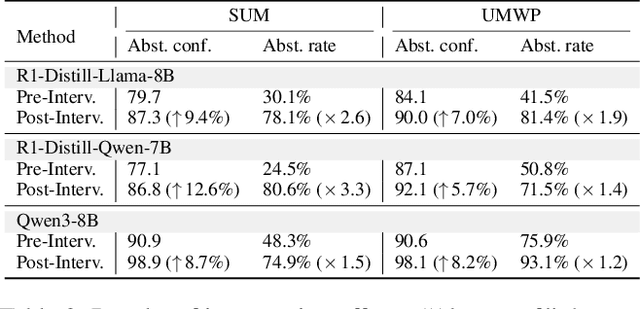Wei Hu
State Key Laboratory for Novel Software Technology, Nanjing University
UrbanV2X: A Multisensory Vehicle-Infrastructure Dataset for Cooperative Navigation in Urban Areas
Dec 23, 2025Abstract:Due to the limitations of a single autonomous vehicle, Cellular Vehicle-to-Everything (C-V2X) technology opens a new window for achieving fully autonomous driving through sensor information sharing. However, real-world datasets supporting vehicle-infrastructure cooperative navigation in complex urban environments remain rare. To address this gap, we present UrbanV2X, a comprehensive multisensory dataset collected from vehicles and roadside infrastructure in the Hong Kong C-V2X testbed, designed to support research on smart mobility applications in dense urban areas. Our onboard platform provides synchronized data from multiple industrial cameras, LiDARs, 4D radar, ultra-wideband (UWB), IMU, and high-precision GNSS-RTK/INS navigation systems. Meanwhile, our roadside infrastructure provides LiDAR, GNSS, and UWB measurements. The entire vehicle-infrastructure platform is synchronized using the Precision Time Protocol (PTP), with sensor calibration data provided. We also benchmark various navigation algorithms to evaluate the collected cooperative data. The dataset is publicly available at https://polyu-taslab.github.io/UrbanV2X/.
KGFR: A Foundation Retriever for Generalized Knowledge Graph Question Answering
Nov 06, 2025Abstract:Large language models (LLMs) excel at reasoning but struggle with knowledge-intensive questions due to limited context and parametric knowledge. However, existing methods that rely on finetuned LLMs or GNN retrievers are limited by dataset-specific tuning and scalability on large or unseen graphs. We propose the LLM-KGFR collaborative framework, where an LLM works with a structured retriever, the Knowledge Graph Foundation Retriever (KGFR). KGFR encodes relations using LLM-generated descriptions and initializes entities based on their roles in the question, enabling zero-shot generalization to unseen KGs. To handle large graphs efficiently, it employs Asymmetric Progressive Propagation (APP)- a stepwise expansion that selectively limits high-degree nodes while retaining informative paths. Through node-, edge-, and path-level interfaces, the LLM iteratively requests candidate answers, supporting facts, and reasoning paths, forming a controllable reasoning loop. Experiments demonstrate that LLM-KGFR achieves strong performance while maintaining scalability and generalization, providing a practical solution for KG-augmented reasoning.
Learning Compact Representations of LLM Abilities via Item Response Theory
Oct 01, 2025



Abstract:Recent years have witnessed a surge in the number of large language models (LLMs), yet efficiently managing and utilizing these vast resources remains a significant challenge. In this work, we explore how to learn compact representations of LLM abilities that can facilitate downstream tasks, such as model routing and performance prediction on new benchmarks. We frame this problem as estimating the probability that a given model will correctly answer a specific query. Inspired by the item response theory (IRT) in psychometrics, we model this probability as a function of three key factors: (i) the model's multi-skill ability vector, (2) the query's discrimination vector that separates models of differing skills, and (3) the query's difficulty scalar. To learn these parameters jointly, we introduce a Mixture-of-Experts (MoE) network that couples model- and query-level embeddings. Extensive experiments demonstrate that our approach leads to state-of-the-art performance in both model routing and benchmark accuracy prediction. Moreover, analysis validates that the learned parameters encode meaningful, interpretable information about model capabilities and query characteristics.
Avoiding Knowledge Edit Skipping in Multi-hop Question Answering with Guided Decomposition
Sep 09, 2025Abstract:In a rapidly evolving world where information updates swiftly, knowledge in large language models (LLMs) becomes outdated quickly. Retraining LLMs is not a cost-effective option, making knowledge editing (KE) without modifying parameters particularly necessary. We find that although existing retrieval-augmented generation (RAG)-based KE methods excel at editing simple knowledge, they struggle with KE in multi-hop question answering due to the issue of "edit skipping", which refers to skipping the relevant edited fact in inference. In addition to the diversity of natural language expressions of knowledge, edit skipping also arises from the mismatch between the granularity of LLMs in problem-solving and the facts in the edited memory. To address this issue, we propose a novel Iterative Retrieval-Augmented Knowledge Editing method with guided decomposition (IRAKE) through the guidance from single edited facts and entire edited cases. Experimental results demonstrate that IRAKE mitigates the failure of editing caused by edit skipping and outperforms state-of-the-art methods for KE in multi-hop question answering.
Answering the Unanswerable Is to Err Knowingly: Analyzing and Mitigating Abstention Failures in Large Reasoning Models
Aug 26, 2025



Abstract:Large reasoning models (LRMs) have shown remarkable progress on complex reasoning tasks. However, some questions posed to LRMs are inherently unanswerable, such as math problems lacking sufficient conditions. We find that LRMs continually fail to provide appropriate abstentions when confronted with these unanswerable questions. In this paper, we systematically analyze, investigate, and resolve this issue for trustworthy AI. We first conduct a detailed analysis of the distinct response behaviors of LRMs when facing unanswerable questions. Then, we show that LRMs possess sufficient cognitive capabilities to recognize the flaws in these questions. However, they fail to exhibit appropriate abstention behavior, revealing a misalignment between their internal cognition and external response. Finally, to resolve this issue, we propose a lightweight, two-stage method that combines cognitive monitoring with inference-time intervention. Experimental results demonstrate that our method significantly improves the abstention rate while maintaining the overall reasoning performance.
Provable Low-Frequency Bias of In-Context Learning of Representations
Jul 17, 2025Abstract:In-context learning (ICL) enables large language models (LLMs) to acquire new behaviors from the input sequence alone without any parameter updates. Recent studies have shown that ICL can surpass the original meaning learned in pretraining stage through internalizing the structure the data-generating process (DGP) of the prompt into the hidden representations. However, the mechanisms by which LLMs achieve this ability is left open. In this paper, we present the first rigorous explanation of such phenomena by introducing a unified framework of double convergence, where hidden representations converge both over context and across layers. This double convergence process leads to an implicit bias towards smooth (low-frequency) representations, which we prove analytically and verify empirically. Our theory explains several open empirical observations, including why learned representations exhibit globally structured but locally distorted geometry, and why their total energy decays without vanishing. Moreover, our theory predicts that ICL has an intrinsic robustness towards high-frequency noise, which we empirically confirm. These results provide new insights into the underlying mechanisms of ICL, and a theoretical foundation to study it that hopefully extends to more general data distributions and settings.
Behave Your Motion: Habit-preserved Cross-category Animal Motion Transfer
Jul 10, 2025Abstract:Animal motion embodies species-specific behavioral habits, making the transfer of motion across categories a critical yet complex task for applications in animation and virtual reality. Existing motion transfer methods, primarily focused on human motion, emphasize skeletal alignment (motion retargeting) or stylistic consistency (motion style transfer), often neglecting the preservation of distinct habitual behaviors in animals. To bridge this gap, we propose a novel habit-preserved motion transfer framework for cross-category animal motion. Built upon a generative framework, our model introduces a habit-preservation module with category-specific habit encoder, allowing it to learn motion priors that capture distinctive habitual characteristics. Furthermore, we integrate a large language model (LLM) to facilitate the motion transfer to previously unobserved species. To evaluate the effectiveness of our approach, we introduce the DeformingThings4D-skl dataset, a quadruped dataset with skeletal bindings, and conduct extensive experiments and quantitative analyses, which validate the superiority of our proposed model.
What Happens During the Loss Plateau? Understanding Abrupt Learning in Transformers
Jun 16, 2025Abstract:Training Transformers on algorithmic tasks frequently demonstrates an intriguing abrupt learning phenomenon: an extended performance plateau followed by a sudden, sharp improvement. This work investigates the underlying mechanisms for such dynamics, primarily in shallow Transformers. We reveal that during the plateau, the model often develops an interpretable partial solution while simultaneously exhibiting a strong repetition bias in their outputs. This output degeneracy is accompanied by internal representation collapse, where hidden states across different tokens become nearly parallel. We further identify the slow learning of optimal attention maps as a key bottleneck. Hidden progress in attention configuration during the plateau precedes the eventual rapid convergence, and directly intervening on attention significantly alters plateau duration and the severity of repetition bias and representational collapse. We validate that these identified phenomena-repetition bias and representation collapse-are not artifacts of toy setups but also manifest in the early pre-training stage of large language models like Pythia and OLMo.
Hypercube-RAG: Hypercube-Based Retrieval-Augmented Generation for In-domain Scientific Question-Answering
May 25, 2025



Abstract:Large language models (LLMs) often need to incorporate external knowledge to solve theme-specific problems. Retrieval-augmented generation (RAG), which empowers LLMs to generate more qualified responses with retrieved external data and knowledge, has shown its high promise. However, traditional semantic similarity-based RAGs struggle to return concise yet highly relevant information for domain knowledge-intensive tasks, such as scientific question-answering (QA). Built on a multi-dimensional (cube) structure called Hypercube, which can index documents in an application-driven, human-defined, multi-dimensional space, we introduce the Hypercube-RAG, a novel RAG framework for precise and efficient retrieval. Given a query, Hypercube-RAG first decomposes it based on its entities and topics and then retrieves relevant documents from cubes by aligning these decomposed components with hypercube dimensions. Experiments on three in-domain scientific QA datasets demonstrate that our method improves accuracy by 3.7% and boosts retrieval efficiency by 81.2%, measured as relative gains over the strongest RAG baseline. More importantly, our Hypercube-RAG inherently offers explainability by revealing the underlying predefined hypercube dimensions used for retrieval. The code and data sets are available at https://github.com/JimengShi/Hypercube-RAG.
When Can Large Reasoning Models Save Thinking? Mechanistic Analysis of Behavioral Divergence in Reasoning
May 21, 2025Abstract:Large reasoning models (LRMs) have significantly advanced performance on complex tasks, yet their tendency to overthink introduces inefficiencies. This study investigates the internal mechanisms of reinforcement learning (RL)-trained LRMs when prompted to save thinking, revealing three distinct thinking modes: no thinking (NT), explicit thinking (ET), and implicit thinking (IT). Through comprehensive analysis of confidence in thinking termination, attention from thinking to generation, and attentional focus on input sections, we uncover key factors influencing the reasoning behaviors. We further find that NT reduces output length at the cost of accuracy, while ET and IT maintain accuracy with reduced response length. Our findings expose fundamental inconsistencies in RL-optimized LRMs, necessitating adaptive improvements for reliable efficiency.
 Add to Chrome
Add to Chrome Add to Firefox
Add to Firefox Add to Edge
Add to Edge